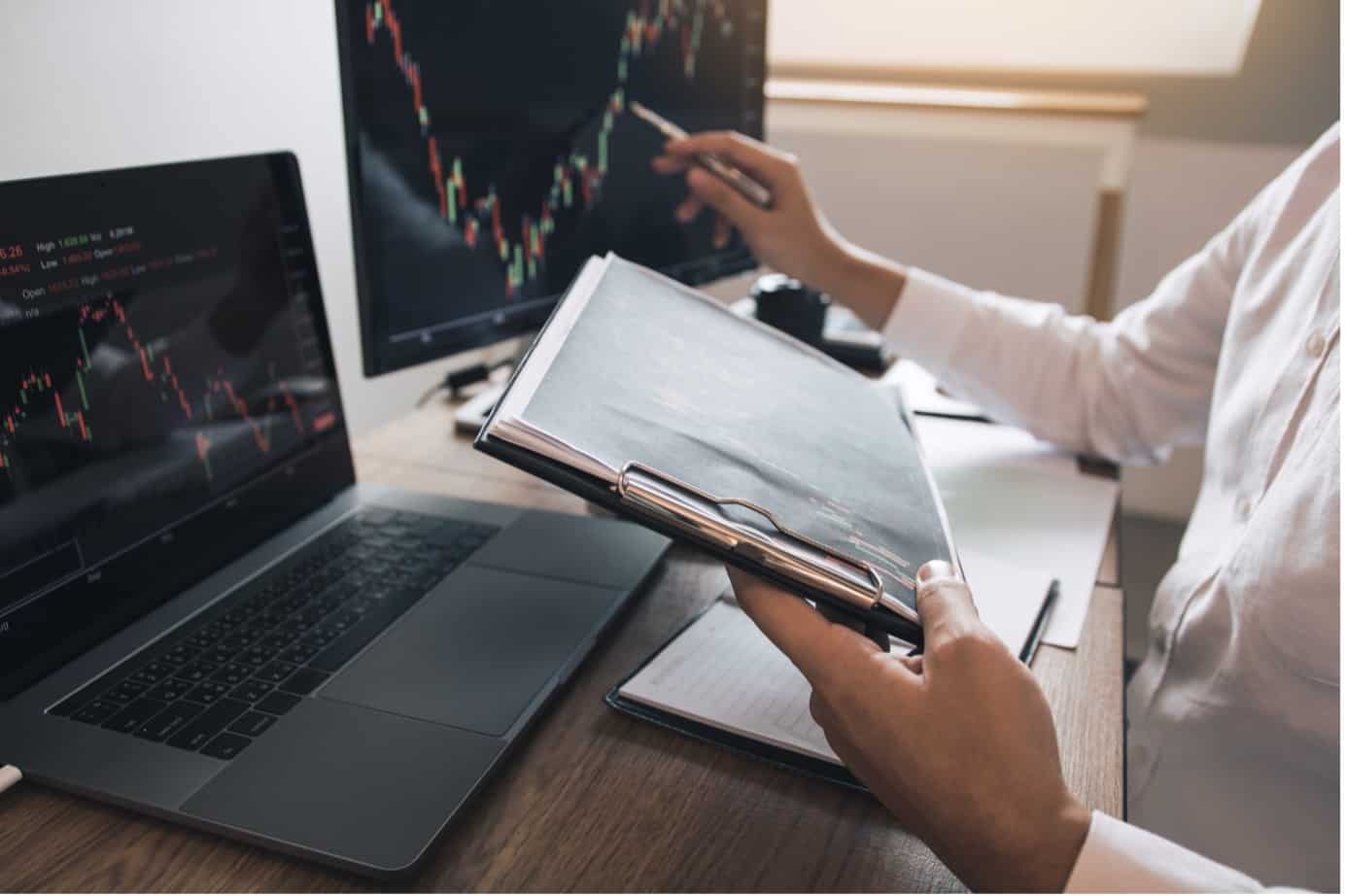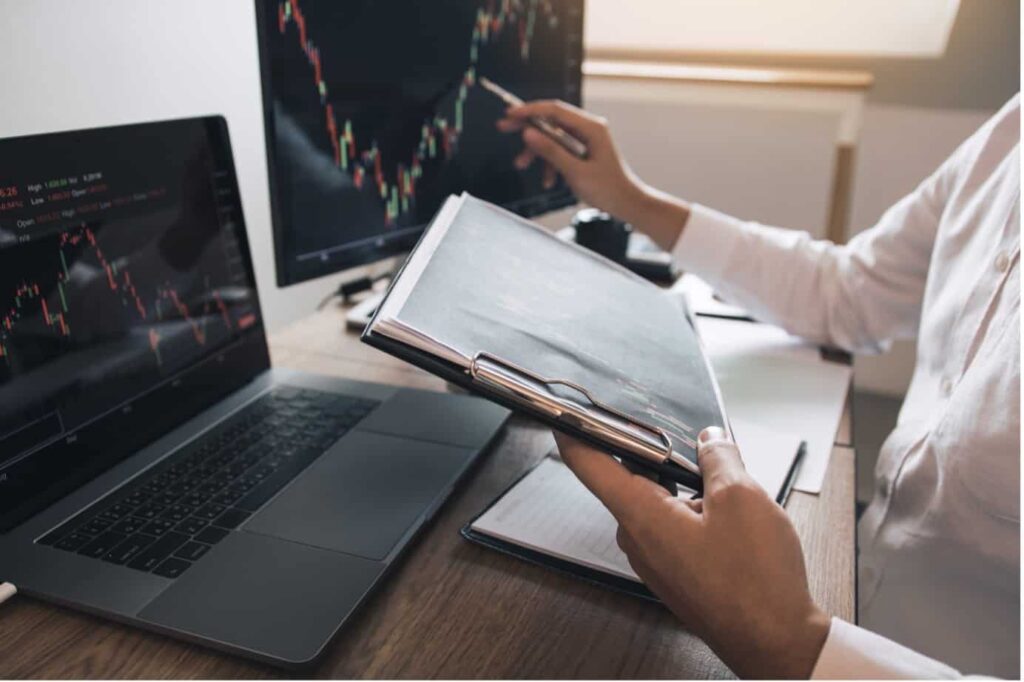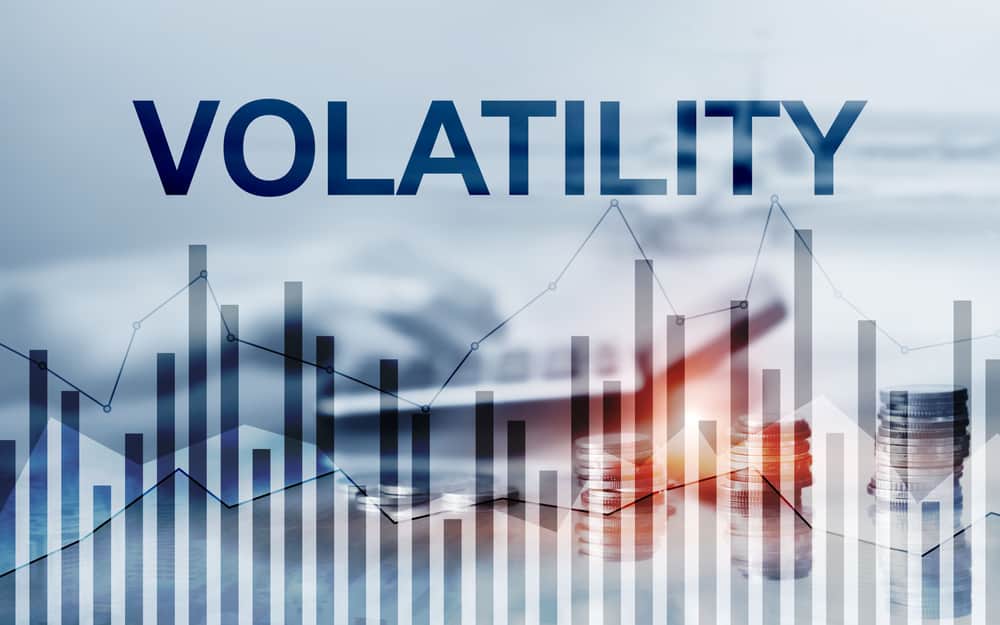

The term ‘volatility’ is a word you will often hear when it comes to trading the forex market, and for good reason. Forex volatility is an important factor to consider when trading because it measures how risky a forex pair is at any particular moment, which in turn can help you decide whether you want to trade during a volatile period or perhaps reduce your exposure.
In this article, we will delve deeper into what forex volatility is, explain how it can be measured, and discuss other important forex trading terms that are closely related to volatility. With a deeper understanding of what volatility is, you should be able to make better trading decisions, especially when it comes to managing your risk.
What Is Volatility in Forex Trading?
Volatility in forex trading is a term used to describe how large the price swings are for a particular currency pair. When a forex pair experiences periods when its price fluctuates wildly up and down, sometimes unexpectedly, such a pair is said to have high volatility.
Conversely, when a forex pair’s price is more stable with smaller price fluctuations, it is said to have low volatility.
The more volatile a forex pair is, the riskier trading conditions become. Forex volatility is therefore closely associated with risk.
In general, major currency pairs are less volatile than exotic currency pairs, for example. This is because major currency pairs are more widely traded, meaning that their prices are less likely to be affected by unexpected events.
That being said, there are times when a currency pair that is considered less volatile can experience an increase in volatility due to factors such as geopolitical events and important economic news events.
Expected events that generally lead to higher volatility in currency pairs, such as monetary policy decisions and employment figures, are closely followed by many forex traders.
Some forex traders may even trade these events in an attempt to profit from volatile conditions.
What Is Historical Volatility?
Historical volatility, also referred to as actual volatility or realised volatility, is a statistical measure of how much a currency pair’s price deviates from its average over a specific period of time.
For forex traders, historical volatility can be used to gauge how volatile a currency pair has become compared to the past.
For example, a high historical volatility reading means that a forex pair is more volatile than usual and that traders may take this as a sign to trade with greater caution or consider reducing their trading sizes.
Note: historical volatility does not offer insights into which direction a currency pair might move, but rather compares current volatility to historical volatility to purely assess the current forex risk.
Related Articles
What Is Implied Volatility?

Implied volatility is a measure of how volatile a currency pair is expected to be in the future, and it is derived from option prices, which are themselves based on the volatility of the underlying currency.
Implied volatility can therefore be seen as an estimate of future volatility. Forex traders often look at implied volatility as a way to gauge market sentiment and to identify potential trading opportunities (or avoid them).
A high implied volatility reading usually indicates that market participants are fearful or uncertain about current market conditions, while a low implied volatility suggests that traders are relatively confident about market conditions.
Put simply, implied volatility can be seen as the ‘market’s current estimate of future volatility’.
Note: although implied volatility is a forward-looking measure of what might happen with volatility in the future, it is important to understand that implied volatility values can change at any time and should not be seen as a definite prediction.
How Are Liquidity and Volatility Related?
Volatility and liquidity are closely related in the foreign exchange market.
Liquidity refers to how actively traded a market is and how much volume is being traded on a daily basis. The more ‘liquid’ a currency pair is, the more stable the price tends to be, making it easier to buy and sell.
The relationship between liquidity and volatility can be summarized as follows.
When there is high liquidity in a forex pair, price fluctuations tend to be more stable and therefore less volatile. The major forex pairs offer the most liquidity for forex traders, followed by the minor forex pairs.
Exotic currency pairs tend to have lower liquidity and often experience unexpected price swings, which generally makes them more volatile.
Leverage and Volatility
Leverage is widely used in forex trading, giving a trader the ability to trade larger positions in a currency than their capital would normally allow. Trading with leverage can therefore magnify your potential profits, but at the same time, magnify losses if price moves against your trade position.
Using leverage properly is an essential risk management skill. Novice forex traders often make the mistake of overleveraging their positions, which typically leads to large losses that can erase their trading capital.
Highly volatile market conditions paired with overleveraged positions magnifies risk even more.
Constantly monitoring forex volatility is very important since it can be used as a ‘tool’ to manage your risk appropriately.
Generally, the higher currency volatility is, the lower leverage you should consider using to avoid large, unexpected price swings.
Conversely, should forex volatility be relatively low, you may want to revert back to the amount of leverage you would normally use under stable market conditions.
Conclusion
FX volatility is a key factor in determining how risky a currency pair is considered to be at any given point in time. As a trader, it is important to know how volatility relates to liquidity and the impact it can have on leverage, especially during highly volatile market conditions.
Ultimately, it is important to remember that forex trading involves a certain amount of risk. By carefully managing your exposure to volatility, you can help to minimize this risk and give yourself the best chance of success.
People Also Read
Forextraders' Broker of the Month
BlackBull Markets is a reliable and well-respected trading platform that provides its customers with high-quality access to a wide range of asset groups. The broker is headquartered in New Zealand which explains why it has flown under the radar for a few years but it is a great broker that is now building a global following. The BlackBull Markets site is intuitive and easy to use, making it an ideal choice for beginners.
